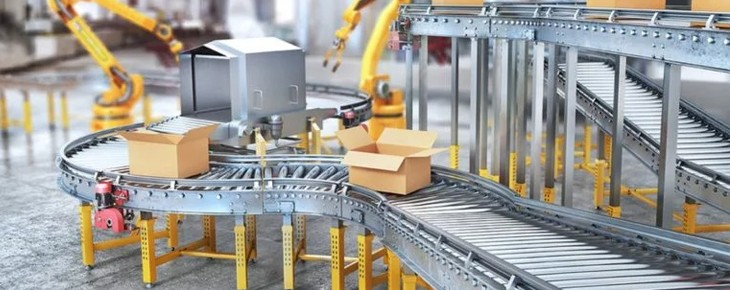In the fast-paced world of pharmaceuticals, where precision and quality are paramount, the integration of cutting-edge technologies has become imperative to ensure safe and efficient processes. The advent of automation, robotics, and Industry 4.0 has revolutionized the landscape of pharmaceutical packaging, propelling the industry towards enhanced efficiency and reduced errors. This transformation is not only reshaping how pharmaceuticals are packaged but also safeguarding the health and well-being of countless individuals.
Packaging Automation 4.0 in Pharma Industry
1. The Era of Automation and Robotics in Pharmaceuticals: A Paradigm Shift
In recent years, the pharmaceutical sector has been undergoing a significant transformation driven by automation and robotics. The traditional manual packaging processes, although meticulous, are often susceptible to human errors. Automation has introduced a new level of precision, speed, and consistency that were previously unattainable. By automating tasks such as labeling, filling, and capping, pharmaceutical companies can ensure uniformity and reduce the risks of contamination and dosage discrepancies.
2. Industry 4.0: The Backbone of Smart Pharma Packaging
Industry 4.0, characterized by the integration of digital technologies, data analytics, and the Internet of Things (IoT), has brought forth a new era of interconnectedness and intelligent decision-making. In the pharmaceutical packaging realm, this translates into the ability to monitor and control processes remotely, in real-time. Sensors embedded in packaging lines can collect data on variables such as temperature, humidity, and pressure, ensuring that products are packaged under optimal conditions. Moreover, predictive analytics can identify potential issues before they escalate, minimizing downtime and wastage.
3. Enhanced Efficiency and Throughput
One of the most significant advantages of incorporating automation and Industry 4.0 technologies into pharmaceutical packaging is the substantial boost in efficiency. Automated packaging lines can operate around the clock, significantly increasing throughput and reducing production lead times. This is particularly crucial in the pharmaceutical sector, where demand fluctuations and stringent timelines often prevail. The speed and precision offered by robots and automated systems translate into quicker product delivery to market, addressing patient needs more promptly.
4. Error Reduction and Improved Quality Control
Human errors in pharmaceutical packaging can have severe consequences, ranging from costly product recalls to jeopardizing patient safety. Automation eliminates the variables associated with human involvement, leading to a remarkable reduction in errors. Robotic arms can perform intricate tasks with unparalleled accuracy, minimizing the risk of mislabeling, incorrect dosages, or faulty packaging. The integration of vision systems and machine learning further enhances quality control by identifying defects that might elude the human eye.
5. Compliance and Regulatory Advantages
The pharmaceutical industry is notorious for its strict regulatory requirements. Automated and digitally monitored packaging processes offer an inherent advantage in complying with these regulations. Detailed records of each packaging step, along with the ability to trace products through the supply chain, simplify audits, and facilitate compliance with Good Manufacturing Practices (GMP) and other industry standards. The transparency offered by these technologies instills confidence not only in regulatory bodies but also in consumers.
6. Workforce Transformation and Upskilling
While the introduction of automation and robotics may raise concerns about job displacement, it is important to note that these technologies facilitate a shift in workforce dynamics rather than complete replacement. Employees who were previously engaged in repetitive and mundane tasks can be upskilled to oversee and manage the automated systems. Moreover, the maintenance, programming, and optimization of these technologies create new job opportunities, ensuring the industry’s workforce remains relevant and adaptable.
7. Sustainable Packaging and Waste Reduction
The environmental impact of pharmaceutical packaging cannot be ignored. Excessive packaging and improper disposal of materials contribute to waste and ecological concerns. Automation and Industry 4.0 technologies allow for precise dosing and reduced packaging material usage. Additionally, these technologies facilitate the integration of eco-friendly materials and sustainable packaging practices, aligning with global efforts to minimize the pharmaceutical industry’s carbon footprint.
8. Future Possibilities: Personalized Medicine and Flexibility
As the pharmaceutical landscape evolves, the concept of personalized medicine gains momentum. Automation and robotics enable the efficient customization of packaging to cater to individual patient needs. This requires adaptable and flexible packaging lines that can swiftly switch between different formats and dosages. Industry 4.0 technologies enable this transition by allowing packaging lines to be reconfigured remotely, reducing downtime and setup costs.
Conclusion
The marriage of automation, robotics, and Industry 4.0 technologies with pharmaceutical packaging processes is ushering in a new era of efficiency, precision, and quality. The advantages extend beyond mere productivity gains, encompassing reduced errors, compliance with regulations, and sustainable practices. As the industry continues to evolve, these technologies will play a pivotal role in shaping the future of pharmaceutical packaging, ultimately benefitting both manufacturers and consumers alike. Embracing this transformation is not just a strategic choice for pharmaceutical companies; it’s a commitment to the safety and well-being of individuals worldwide.
Published August 12, 2023 By Propak India
Categorized as VISITOR SEGMENTS Tagged Packaging Automation 4.0 in Pharma Industry

